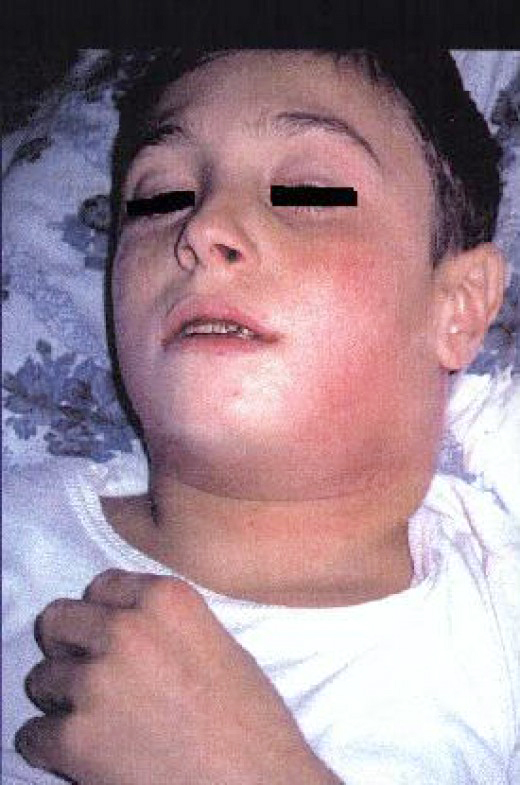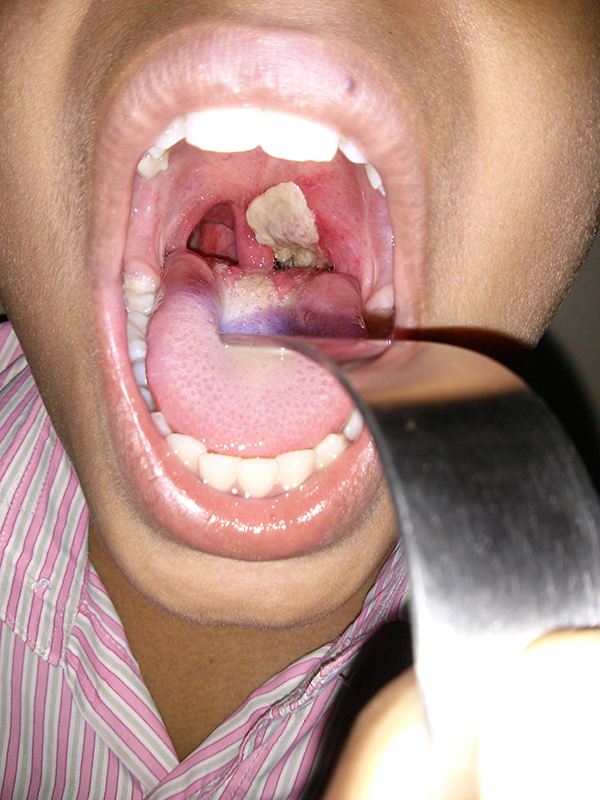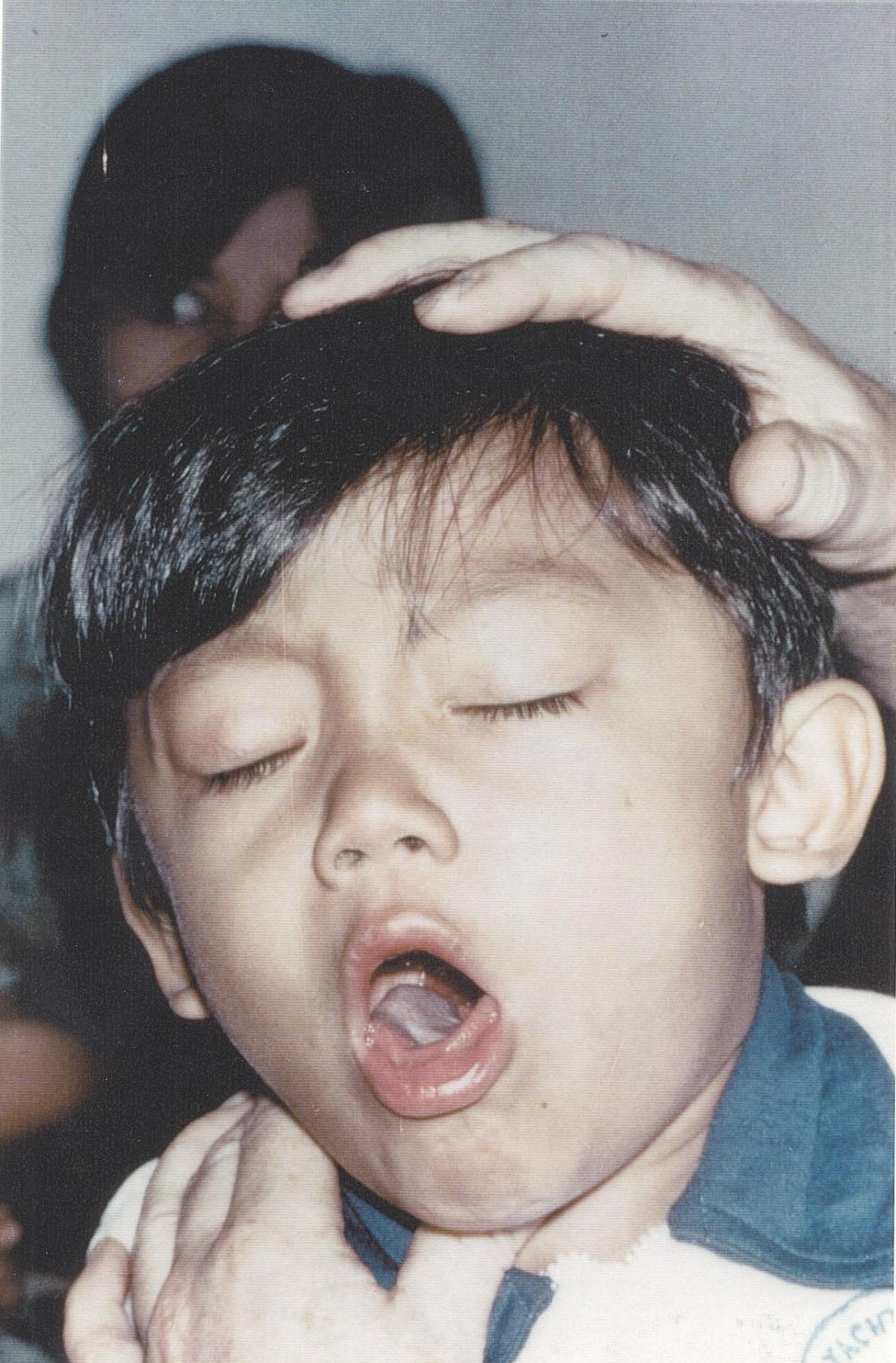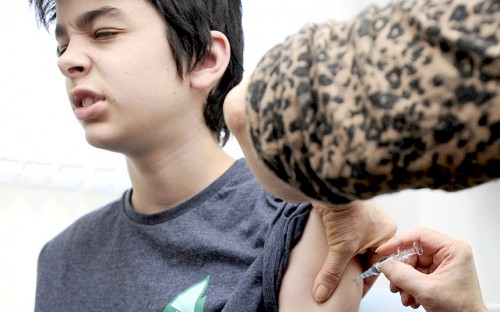Child Diseases Parents Should Know – Part 6
This list of “commonly common” diseases is getting longer than I anticipated. We’re now in Part 6 of the series: Child Diseases Parents Should All Know About and we have already covered quite a bit.
The last post was a bit scary and I’m afraid this one isn’t much better – BUT, we must keep in mind that, although these diseases must have been plaguing Adam and Eve’s kids, medicine has already placed in our hands the very means of completely eradicating them! (If only)
Part 1 discussed Croup and Bronchiolitis; Part 2 ear infections and “glue” ear; Part 3 discussed Hand, Foot and Mouth Disease, Conjunctivitis and Fifth Disease and Part 4 Rotavirus and Kawasaki Disease.
Part 5 began the immunizable diseases Chickenpox, Measles, Mumps and Rubella, which today we will continue.
Still More Child Diseases For Parents To Know
Diphtheria, Pertussis and Tetanus
It’s really not that I expect you to be faced with one of these diseases any time soon; but, you might. Many of them were truly nearing eradication when a British doctor falsified his research for the “fame” of creating a controversy and dragged a contingent of conspiracy theorists and unwitting parents into his agenda – where they began refusing immunizations.
Even though he eventually was completely exposed for the deceitful fraud he was, and lost his license to practice, it wasn’t before nearly all of these deadly diseases began staging a comeback resurgence.
Knowing about them may not be pertinent to fighting a family member’s disease; but, it should help solidify your understanding of the decisions you’ll make in providing health care to your family.
Diphtheria
 Teen boy with Diphtheria – “bull neck” and myocarditis.Just like three of the diseases listed in part 5 of this series all had their immunizations within the “MMR” shot, the next three have theirs in a single shot too: the DPT, which stands for Diphtheria-Pertussis-Tetanus.
Teen boy with Diphtheria – “bull neck” and myocarditis.Just like three of the diseases listed in part 5 of this series all had their immunizations within the “MMR” shot, the next three have theirs in a single shot too: the DPT, which stands for Diphtheria-Pertussis-Tetanus.
The symptoms of Diphtheria usually begin 2-7 days after becoming infected by contact with airborne particles, contaminated personal or household items or by touching an infected wound – and they are multiple!
It begins with a fever, chills, fatigue, sore throat, hoarseness, cough, headache, difficulty swallowing, foul-smelling bloodstained nasal discharge and lymphadenopathy.
I say “begins with” because there’s much more left to come like: a bluish skin coloration from cyanosis, rapid and difficult breathing, cardiac arrhythmias, myocarditis and cranial and peripheral nerve palsies.
Diphtheria is not a virus like the others we’ve been discussing, it’s a bacteria plus a toxin produced by a “phage” infection within the bacteria. The bacteria multiplies in the head and throat and the toxin spreads first to tissues around the infection and then to the other tissues.
So far, the bacteria can be killed by antibiotics and the body’s tissues can be protected by anti-toxins, EXCEPT for those tissues which have ALREADY BEEN ATTACKED by the toxin. The anti-toxin can’t get rid of it once it’s already attached – the body must do that in its own due time.
The toxin damage produces a grey membrane over the throat and breathing surfaces which can block airways; and the swollen tissues cause extended neck posturing called a “bull neck.” Then, after all of this, you are still NOT guaranteed lifetime immunity – you can get it all over again if you’re not fully immunized against it!
If you have read other posts on this web site and wondered why I seem to “give no quarter” on those misguided souls who gamble with their children’s safety by vaccine refusal, you need look no further than this disease right here! The apparent lull in the diphtheria storm is only millimeters deep, its full fury is lurking just a small drop in immunization rate away.
 Boy with Diphtheria – pseudomembrane in throat.As proof of what I say, after the breakup of the former Soviet Union in the late 1980s the vaccination rates in its constituent countries fell so low that there was a literal explosion of diphtheria cases!
Boy with Diphtheria – pseudomembrane in throat.As proof of what I say, after the breakup of the former Soviet Union in the late 1980s the vaccination rates in its constituent countries fell so low that there was a literal explosion of diphtheria cases!
In 1991, there were 2,000 cases of diphtheria in the USSR and by 1998, according to Red Cross estimates, there were as many as 200,000 cases in the Commonwealth of Independent States (former Russia), with 5,000 deaths!
This was so great an increase that diphtheria was cited in the Guinness Book of World Records as the “most resurgent disease!”
Look at all the exclamation points in these paragraphs. This is NO SMALL DEAL. Diphtheria is FATAL in between 5% and 10% of cases. In children under five years and adults over 40 years, the fatality rate may be as much as 20%. As of 2010 it still caused about 2,900 deaths world-wide.
The toxin travels to other tissues as well. The Heart becomes inflamed (myocarditis) and damage can be slight (minor abnormalities on an ECG) or severe with congestive heart failure and sudden death.
In the throat the toxin attacks the nerves preventing swallowing, in the arms and legs the inflamed nerves create weakness, in the chest they can paralyze breathing and require complete respiratory assist for weeks or months.
To watch a child suffer with all this and realize that it could have been prevented by a simple immunization is disheartening. In as few years ago as the 1920’s the U.S. had nearly 200,000 cases per year with 15,000 deaths, mostly children.
Huge outbreaks were common and the most famous was in isolated Nome, Alaska where large numbers of children were suffering and dying each day. A massive effort to transport thousands of doses of anti-toxin was being thwarted by cold, ice and weather until the “Great Race of Mercy” was able to deliver it by dog sled teams.
Today, that singular event is commemorated yearly and is known as the: Iditarod Trail Sled Dog Race.
Whooping Cough
 Child with Pertussis – Whooping CoughIn case you were wondering, the characteristic “whoop” sound that gives Whooping Cough its name is the frantic and painful gasp for air a child makes after a fit of uncontrollable coughing.
Child with Pertussis – Whooping CoughIn case you were wondering, the characteristic “whoop” sound that gives Whooping Cough its name is the frantic and painful gasp for air a child makes after a fit of uncontrollable coughing.
Pertussis, as it is known in medical circles, is caused by an infection with Bordella Pertussis bacteria which makes children cough so hard that they run out of breath and inhale with a “whoop.” Individuals who contract this illness are nearly always hospitalized and all too frequently suffer side effects including death.
It is a contagious bacterial infection which infects both adults and children but infants, elderly and immunocompromised individuals are obviously more severely ill.
The immunization against the disease has been available for many years and it’s the “P” in the DTaP series of shots along with Diphtheria and Tetanus.
The disease was on the way to being eradicated (along with several others) due to intensive immunization programs; but, almost like “Sauron’s one ring” in the Tolkien novels, it wouldn’t go down without a fight and took advantage of some suspicious individuals without true scientific data who began refusing to accept immunization.
Since the low point in the 1980s, the disease has been slowly on the increase. The CDC reported almost 28,000 cases of the disease in the US in 2010! Partly because of epidemics in non-immunized communities and partly because the immunity from the shots requires a “booster” shot every 10 or so years and adults forget to obtain them.
Tetanus
Tetanus is one of those diseases which, like we’ve been warned about for many, many years, isn’t around much any more. BUT, it’s not because the little villain isn’t trying, because it does and still succeeds once in awhile.
Look, there’s good news and bad news. Which do you want first?
The good news – Tetanus isn’t spread from person to person like just about everything else we’ve talked about;
The bad news – You can get it any time your skin is broken, like with a puncture wound, which is a lot because it’s easy to do;
Good news – The organism, Clostridium tetani, isn’t carried in the air because it doesn’t grow in air;
Bad news – The organism is found in dirt, which is everywhere that air isn’t;
Good news – It’s a bacteria, which means it can be killed with the help of antibiotics;
Bad news – It’s not the bacteria that’s the whole problem, it’s the toxin it secretes;
Good news – The bacteria don’t grow in air, only where oxygen is low;
Bad news – The spores are everywhere! On just about everything that will cut or poke you, especially anywhere around animal or organic matter;
 Teen boy with opisthotnic posture of Tetanus.Good news – There’s an immunization, Tetanus Toxoid, available to prevent lockjaw;
Teen boy with opisthotnic posture of Tetanus.Good news – There’s an immunization, Tetanus Toxoid, available to prevent lockjaw;
Bad news – It doesn’t last forever and needs a booster about every ten years;
Good news – If you forget your booster shot the ER will remind you when they treat you (if they get a chance to treat you) and give you the needed booster shot;
Bad news – The current shot WON’T help you for the wound you’re being seen for because the immunity takes a couple weeks to form; so, you still could get lockjaw from THIS wound.
Good news – You don’t need a blood test to diagnose the disease (because there isn’t one), symptoms and history are all that is needed to make the diagnosis;
Bad news – The symptoms are so unique and bad that it couldn’t be anything else.
If the doctor places a tongue blade at the back of a patients throat and instead of gagging the stick back out it triggers a muscle spasm that locks their jaw on the stick (the spatula test) – it’s lockjaw.
From the ancient Greek language, the term “tetanus” means “to stretch taut” and that it does. The toxin works its way into the nerves and muscles and produces such irritability that they contract severely and long – first in the jaw muscles and then to the rest of the body. “Opisthotnos” is the term for the body posture when all of the back muscles contract and cause arching.
If the Clostridium Tetanii spore gets inside a wound where the oxygen is low and starts growing and producing toxin it can cause three different, although similar, diseases up to several months later – but usually within about 8 days.
Neonatal tetanus, very uncommon these days, is generalized and caused by infection of the unhealed umbilical stump – usually when it has been cut with a non-sterile instrument – to mothers who have NOT been vaccinated themselves so have no immunity they can pass to the infant.
Local tetanus also uncommon, is localized to the body part with the wound and causes contractures there for many weeks or months. Being generally milder, only about 1% of cases are fatal – if it doesn’t proceed into the generalized form.
Generalized tetanus, most common (80%), generalized and usually presents in a descending pattern. The first is trismus (lockjaw) then facial spasms (risus sardonicus) then followed by stiffness of the neck, difficulty in swallowing, and rigidity of pectoral and calf muscles.
Still today Tetanus is an international health problem almost exclusively in the unvaccinated or inadequately immunized – especially in hot, damp climates with rich organic soil. The cases that are reported in the U.S. still average about 30 as of 2009.
– – 0 – –
We’re well on our way to completing the “commonly common” childhood diseases that all parents should know about; but, there’s a bit more yet… next time Meningitis, among others.
11 Posts in Childhood Diseases (childdiseases) Series
- Part 10 - Lyme - Allergies – 9 Oct 2014
- Part 9 - Impetigo - Influenza – 1 Oct 2014
- Part 8 - Polio - MRSA – 23 Sep 2014
- Part 7 - Meningitis - Scarlet Fever – 11 Sep 2014
- Part 6 - Diptheria - Tetanus – 3 Sep 2014
- Part 5 - Varicella - Rubella – 18 Aug 2014
- Part 4 - Rotavirus - Kawasaki's – 10 Aug 2014
- Part 3 - Hand, Foot, Mouth and Fifth disease – 29 Jul 2014
- Part 2 - Otitis, Glue ear – 21 Jul 2014
- Part 1 - Croup, Bronchiolitis – 17 Jul 2014
- Childhood Diseases Parents Should Know: Intro/Index – 15 Jul 2014

